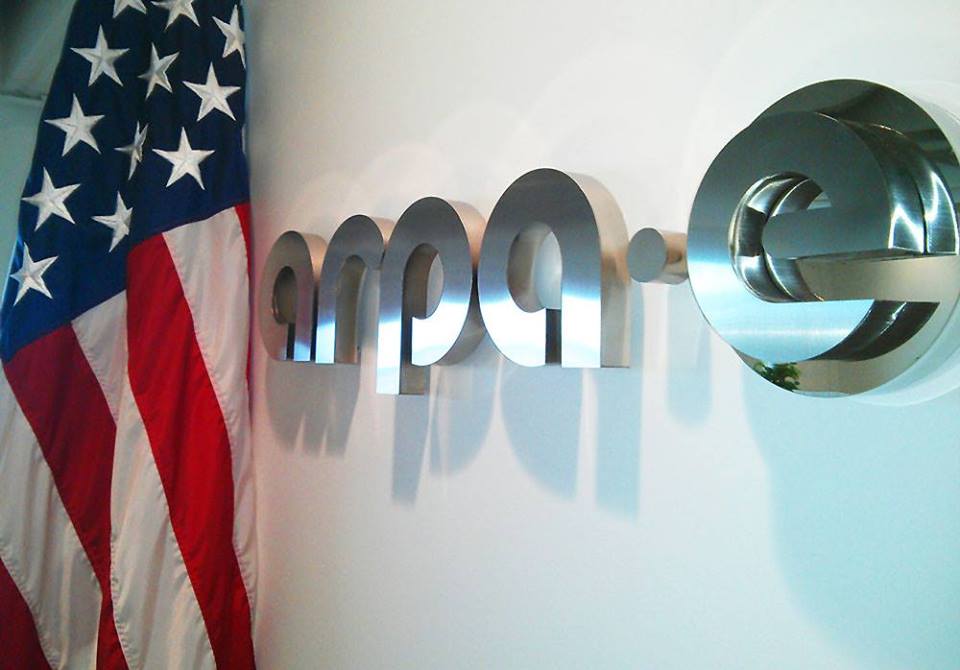
ARPA-E - Enhancing Energy Security Through Defense Partnerships
One of the pillars of our mission here at ARPA-E is to enhance the economic and energy security of the United States. We do this by supporting the development of energy technologies that could potentially reduce energy imports from foreign sources, decrease energy-related emissions, and improve the energy efficiency of our nation’s economic sectors. Through strategic partnerships and collaborations with other federal agencies, we can help our awardees to further develop and prepare their technologies to eventually make the transition out of the lab and into the market.
Over ARPA-E’s first decade, one of our strongest partners in working to enhance the energy security of the United States has been the Department of Defense. As the DoD is one of the largest energy consumers in the world – accounting for nearly 1% of U.S. energy consumption – they’re a natural partner for our work. The technologies we are helping to develop can help DoD to operate U.S. forces more effectively and increase their energy efficiency and resilience. And since ARPA-E is modeled on DoD’s popular Defense Advanced Research Projects Agency, you could say that partnering with DoD on energy innovation is in our DNA.
We’re excited to announce a new partnership with DoD’s Environmental Security Technology Certification Program (ESTCP) to further demonstrate and validate ARPA-E derived technologies at DoD installations across the country. ESTCP targets DoD’s urgent environmental and installation energy needs to improve Defense readiness, resilience and costs. Projects under this partnership will conduct demonstrations to validate the performance and operational costs of promising ARPA-E technologies and provide valuable data needed for end-user acceptance and to accelerate the transition of these technologies to commercial use.
Take a look at the four projects that are part of our new collaboration with DoD’s ESTCP below:
The Mackinac Technology Company – Rolling Fork, MS
Mackinac Window Energy Management Systems (WEMS™) - $1,710,110
The Mackinac WEMS™ technology is a comprehensive system engineered to dramatically improve the insulating properties of single-pane windows. Mackinac WEMS™ units are the only products in the polymer window coverings/attachments sector that not only comply with force protection standards but can also provide enhanced blast protection for building occupants. Two demonstration sites, Fairchild Hall at the U.S. Air Force Academy in Colorado Springs, CO, and the Engineering Building at the Selfridge Air National Guard Base near Mount Clemens, MI, will be used to validate their performance.
SkyCool Systems, Inc. – Mountain View, CA
Reducing Energy and Water Usage by Cooling DoD Facilities with the Sky- $202,811
SkyCool Systems has developed a rooftop cooling panel that improves the efficiency of air conditioning and refrigeration systems. The core technology in the panels is a multilayer optical film that passively radiates heat to the sky day and night, and stays cool even under direct sunlight. The panels cool without evaporating water and only require electricity to run a water pump. The cooling panels are well matched to the 24/7 operation of refrigeration systems and air conditioning systems in data centers and data closets. The proposed project involves deploying SkyCool panels at four DoD facilities in different climate zones to demonstrate the energy and operational savings when panels are connected to refrigeration and data center cooling systems.
Switched Source LLC – Vestal, NY
Increased Distribution System Connectivity through the Application of the Tie Controller - $725,850
Switched Source’s Tie Controller (TC) will be deployed on a DoD base’s primary electric distribution system. The TC enables automated routing of controlled amounts of real and reactive power across circuit feeders to boost system performance while reducing the risk of disruptions. The technology enables electric distribution system operators to dispatch and balance power flow, similar to a controllable valve or an Internet router but for power. One circuit can “borrow” capacity from another, enabling better load balancing, fuller use of intermittent and distributed energy resources, and built-in redundancy to minimize outages.
Case Western Reserve University – Cleveland, OH
Demonstration and Validation of a Virtual Energy Audit Tool for DoD Buildings - $561,524
Case Western will demonstrate and validate a virtual energy audit software tool called EDIFES (Energy Diagnostics Investigator For Efficiency Saving) on ~500 DoD buildings without setting foot in them or requiring building/energy managers to complete lengthy questionnaires. Case Western has found a way to map a building’s “energy DNA” through a rigorous statistical and machine learning analysis of time-series electricity consumption data compared with other buildings. The project team will: (1) use the EDIFES portfolio screening tool to produce a prioritized list of buildings with the highest energy savings opportunities and an interactive visualization of results; (2) identify and quantify energy and cost savings opportunities in these buildings throughout the project; and (3) validate the EDIFES prediction of savings.
